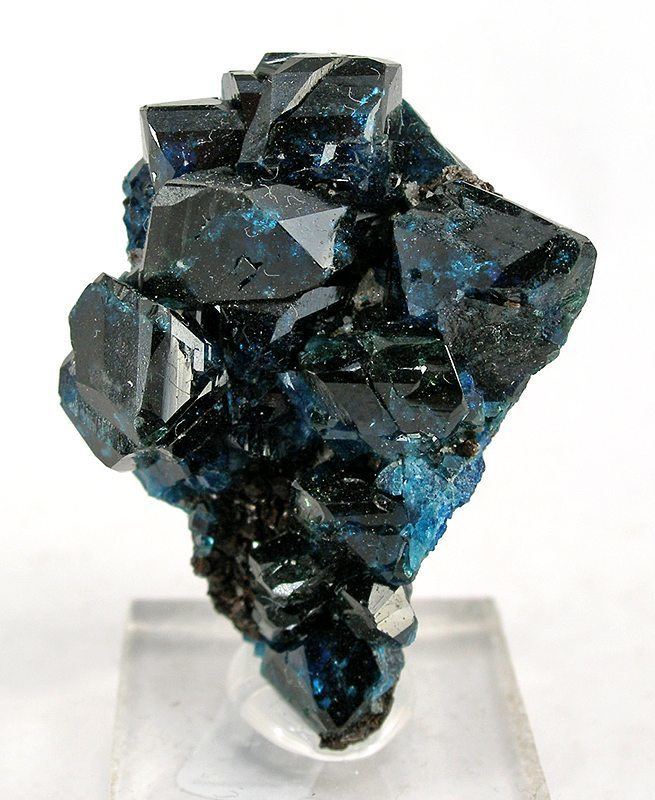Strunz classification 8.BB.40 Space group P21/c | Formula(repeating unit) (Mg,Fe)Al2(PO4)2(OH)2 | |
 | ||
Crystal class Prismatic (2/m)(same H-M symbol) | ||
Lazulite ((Mg,Fe2+)Al2(PO4)2(OH)2) is a blue, phosphate mineral containing magnesium, iron, and aluminium phosphate. Lazulite forms one endmember of a solid solution series with the darker iron rich scorzalite.
Lazulite crystallizes in the monoclinic system. Crystal habits include steep bipyramidal or wedge-shaped crystals. Lazulite has a Mohs hardness of 5.5 to 6 and a specific gravity of 3.0 to 3.1. It is infusible and insoluble.
Occurrence and discovery
It forms by high grade metamorphism of high silica quartz rich rocks and in pegmatites. It occurs in association with quartz, andalusite, rutile, kyanite, corundum, muscovite, pyrophyllite, dumortierite, wagnerite, svanbergite and berlinite in metamorphic terrains; and with albite, quartz, muscovite, tourmaline and beryl in pegmatites. It may be confused with lazurite, lapis lazuli or azurite.
It is found in Salzburg, Austria; Zermatt, Switzerland; Minas Gerais, Brazil; Lincoln County, Georgia; Inyo County, California; the Yukon in Canada, and elsewhere.
It was first described in 1795 for deposits in Styria, Austria. Its name comes from the German lazurstein, for blue stone or from the Arabic for heaven.
